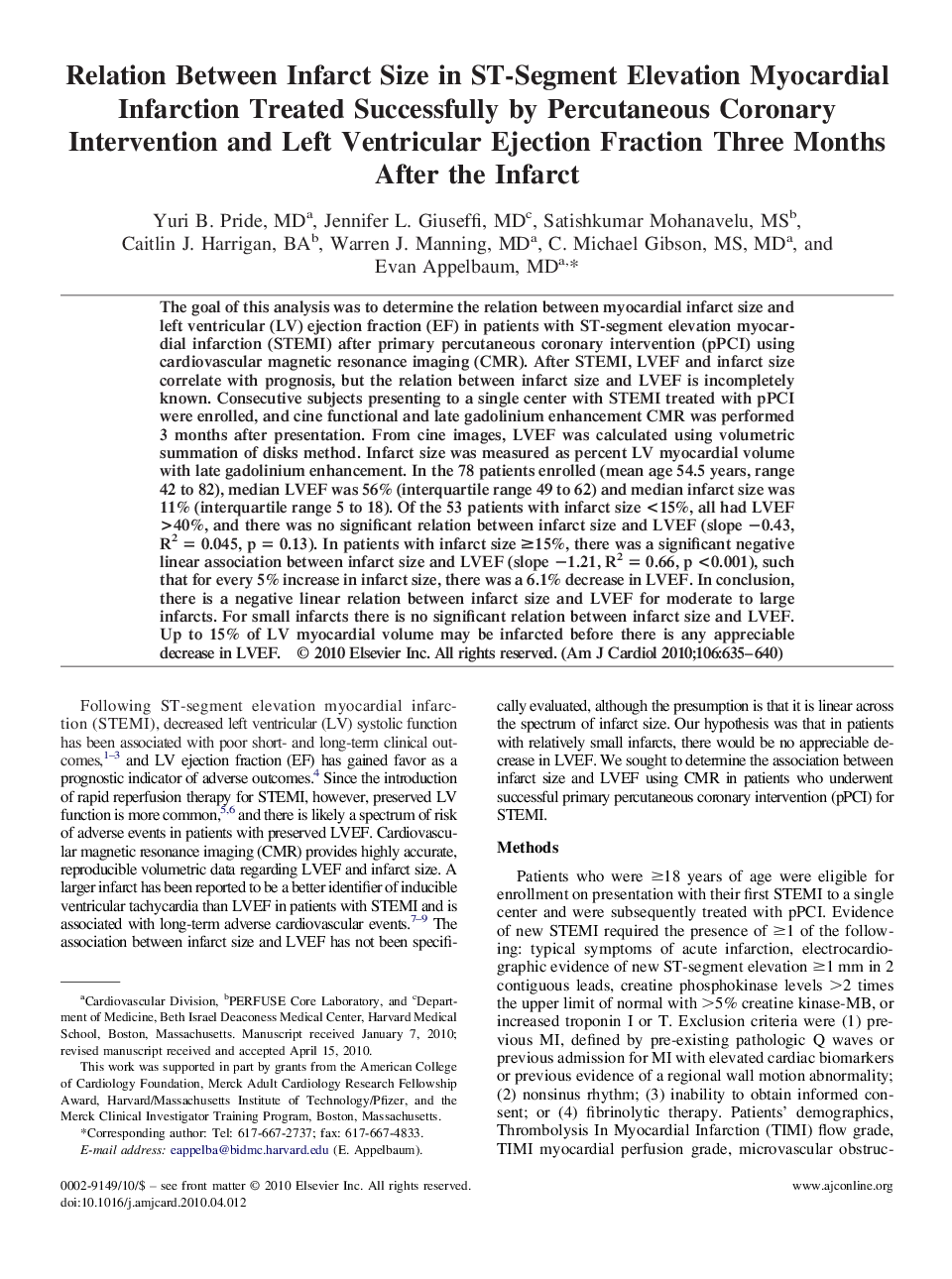| Article ID | Journal | Published Year | Pages | File Type |
|---|---|---|---|---|
| 2857129 | The American Journal of Cardiology | 2010 | 6 Pages |
The goal of this analysis was to determine the relation between myocardial infarct size and left ventricular (LV) ejection fraction (EF) in patients with ST-segment elevation myocardial infarction (STEMI) after primary percutaneous coronary intervention (pPCI) using cardiovascular magnetic resonance imaging (CMR). After STEMI, LVEF and infarct size correlate with prognosis, but the relation between infarct size and LVEF is incompletely known. Consecutive subjects presenting to a single center with STEMI treated with pPCI were enrolled, and cine functional and late gadolinium enhancement CMR was performed 3 months after presentation. From cine images, LVEF was calculated using volumetric summation of disks method. Infarct size was measured as percent LV myocardial volume with late gadolinium enhancement. In the 78 patients enrolled (mean age 54.5 years, range 42 to 82), median LVEF was 56% (interquartile range 49 to 62) and median infarct size was 11% (interquartile range 5 to 18). Of the 53 patients with infarct size <15%, all had LVEF >40%, and there was no significant relation between infarct size and LVEF (slope −0.43, R2 = 0.045, p = 0.13). In patients with infarct size ≥15%, there was a significant negative linear association between infarct size and LVEF (slope −1.21, R2 = 0.66, p <0.001), such that for every 5% increase in infarct size, there was a 6.1% decrease in LVEF. In conclusion, there is a negative linear relation between infarct size and LVEF for moderate to large infarcts. For small infarcts there is no significant relation between infarct size and LVEF. Up to 15% of LV myocardial volume may be infarcted before there is any appreciable decrease in LVEF.
